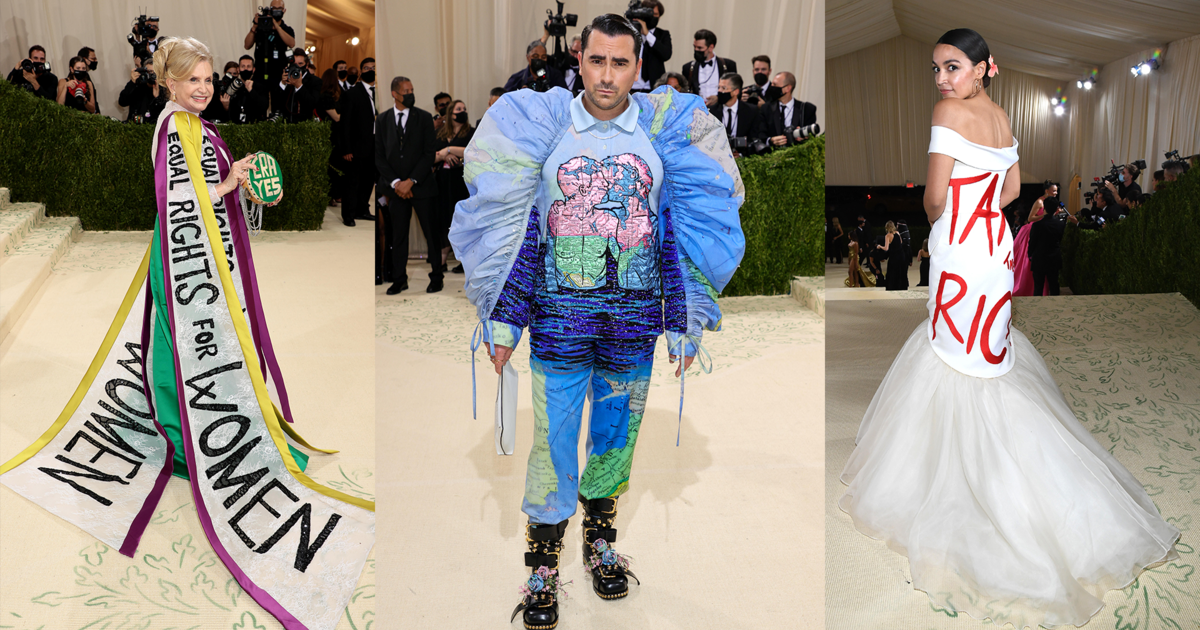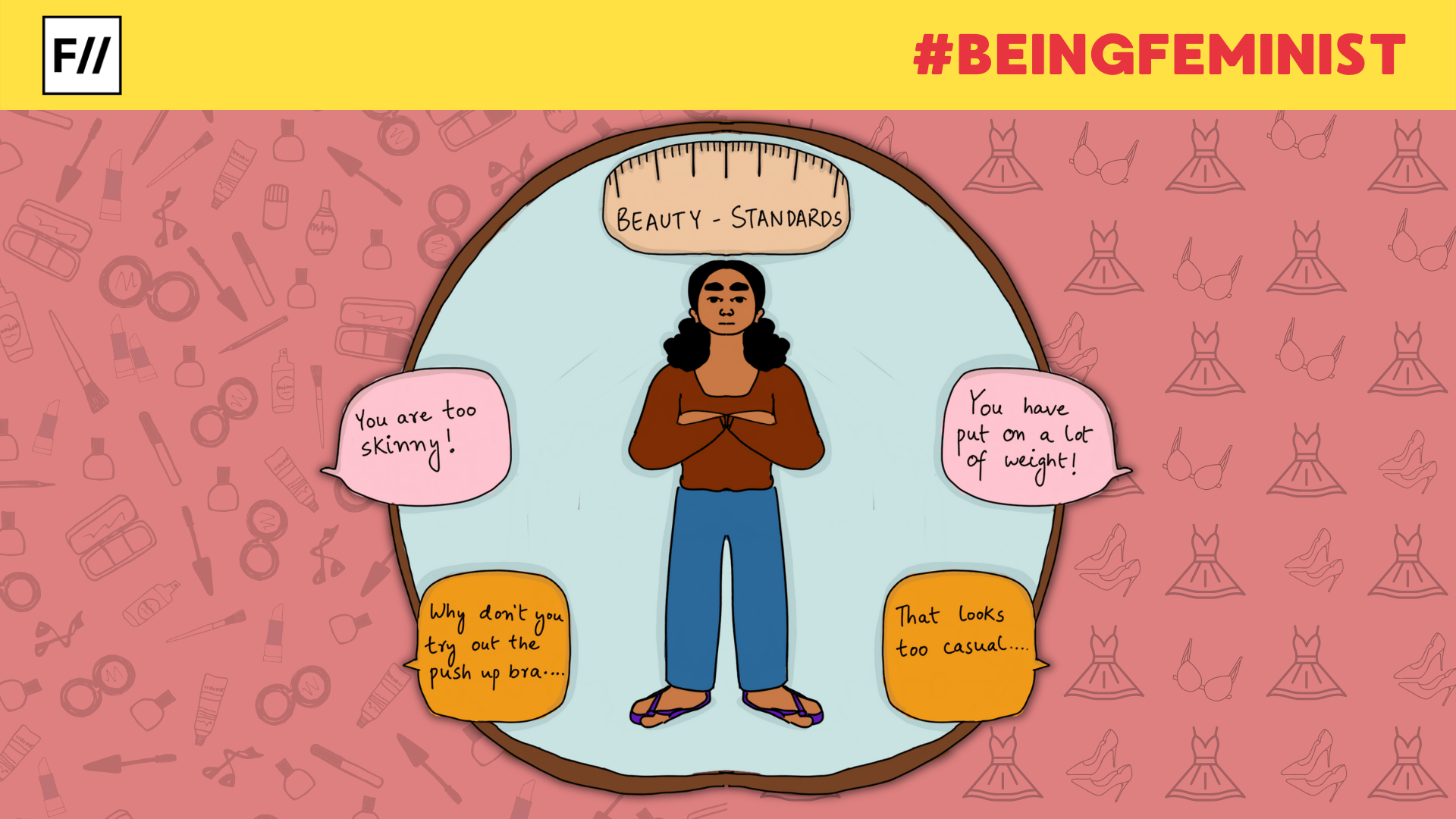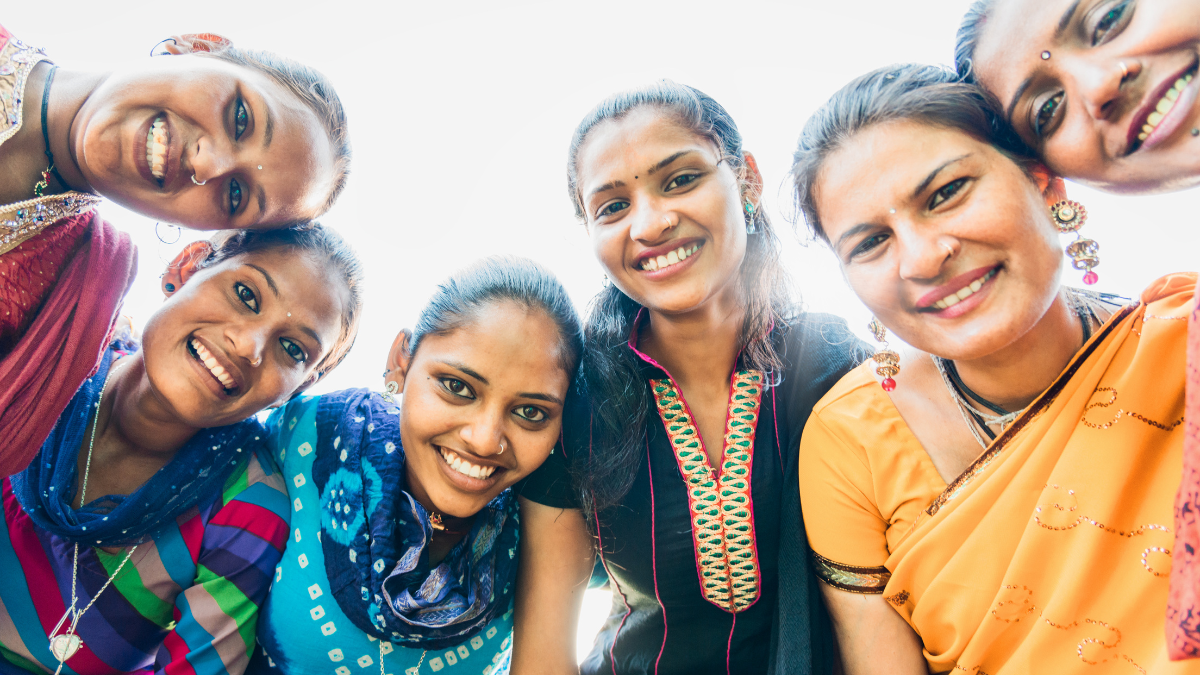Editorial Note: Being Feminist is a fortnightly column that features personal narratives documenting the emotions, vulnerabilities and innermost contradictions every feminist encounters while trying to push through various degrees of patriarchy in private, professional and public spaces.
Being locked up in my house since the pandemic, I had forgotten how uncomfortable it was to wear jeans. The course of fashion and daily wear clothing has changed a lot in these two years. While working/studying from home, we have collectively discarded jeans and bras and gotten into more casual clothing.
When my university opened for the last few months before graduation, it became extremely challenging for me to break the habit of being cocooned up in comfortable clothes throughout the day. Not that I wasn’t looking forward to experiencing campus life, but the sheer thought of having to dress up every day was hectic for me.
Clothing is a form of self-expression. It may be a part of an individual’s gender identity or an expression of the general aesthetic of a person. Sometimes, fashion can go beyond that. Fashion aids in communicating a statement which is sometimes politicised. With global fashion trends changing over time, we have witnessed artists using fashion to express an idea or political sentiments. From Met Gala or the Emmy Awards, to any other big event, time and again, we have witnessed how fashion has been weaponised to assert political solidarity.

As we transitioned towards normalcy in the past couple of months, wearing skinny jeans to my university truly irked me. The same pair of pants which used to easily fit into my narrative of casual daily wear in a pre-pandemic period, made me realise how much I have perhaps conformed to the heteronormativity of society
Throughout history, patriarchy has dictated how to act like a modest, subservient ‘woman‘. Women weren’t givem the autonomy to decide their clothing choices. They were made to wear tight corsets and uncomfortable garments that quite literally put a curb on their movement and symbolically on their freedom as well. Back then, women’s attire and clothing choices were the results of rigid traditional customs and gender roles imposed on them.
However, within the course of the feminist movement, changes set in when women decided to revolt against the status quo. Through discarding bras, corsets, and large petticoats that hindered their movement, and sexualised them, they became inclined towards attires that were practical and comfortable for them to wear.
Hence, pants, trousers, miniskirts and dresses became common. Fashion became the driving force behind many socio-political movements. The suffragette movement of the early 20th century is a testimonial to how fashion has been intrinsically related to the feminist movement. Women’s all-white clothing became symbolic of their revolt.
Also read: ‘Is Fangirling Unfeminist?’: Loving A Bollywood Star And Enjoying Cricket While Being Feminist

As a feminist, it is hard to overlook the male-female binary in clothing, imposed by society. Two things that hold high value in society are femininity and the modesty of women’s clothing choices. Even though I consider my style to be more on the ‘feminine side‘, recently it has dawned on me that the term ‘feminine’ connotes a very different meaning in a society that thrives on oppressing women.
The nuances of being a modern-day feminist are all about breaking conventions, reflecting on and at the same time, questioning age-old archaic customs and norms of the society. Hence, my femininity is more about embracing my body, however I am. It is more about my choice and opportunity. The moral compass of my feminist ideology reminds me that curves or the lack of them, do not define me
In the heteronormative context, being feminine is synonymous to being docile, weak and submissive, or rather, that is how the term is constructed. Society imposes restrictions on women’s autonomy and scrutinises their choices. I am supposed to adhere to the societal standard of beauty to become the “ideal woman”. Our society fails to acknowledge anything beyond the male-female gender binary and this is problematic, to say the least.
Androgynous clothing choices have become more about appropriating specific masculine or feminine looks, on the opposite gender. Hence, even androgynous fashion doesn’t entirely celebrate fluidity and the problem also lies in the fact that the societal standards of beauty cater to the male gaze.

As we transitioned towards normalcy in the past couple of months, wearing skinny jeans to my university truly irked me. The same pair of pants which used to easily fit into my narrative of casual daily wear in a pre-pandemic period, made me realise how much I have perhaps conformed to the heteronormativity of society. I have always been very thin and growing up, I was always shamed by people for not being attractive enough. These people were no strangers to me – friends, relatives and sometimes my own family. In high school, I was constantly made fun of for having a flat chest.
There have been numerous instances that I can recall from my childhood where I was compared to a “matchstick”. Nothing stopped people from passing comments on my body or offering unsolicited advice on diets. Being at the receiving end of condescending comments and skinny shaming, I became insecure about my own body.
This reflected on my clothing choices as well. For instance, I started wearing push-up bras, and skinny jeans and avoided any baggy clothes. I found myself adhering to the cis-het representation of a woman. This stemmed from my internalised insecurities. I was conditioned to fit the societal standards of beauty. Such unrealistic beauty standards, carefully constructed by society and the sexualisation of women’s bodies cater to the male gaze and cyclical capitalism.
The nuances of being a modern-day feminist are all about breaking conventions, reflecting on and at the same time, questioning age-old archaic customs and norms of the society. Hence, my femininity is more about embracing my body, however I am. It is more about my choice and opportunity. The moral compass of my feminist ideology reminds me that curves or the lack of them, do not define me.
Also read: ‘Feminists Are Yet To Feel Comfortable In Family Spaces’: Aligning To Family Values While Being Feminist
Featured Image Source: Ritika Banerjee for Feminism In India
About the author(s)
Rohini Ghosh is an aspiring journalist and a postgraduate Mass Communication student at St. Xavier's University, Kolkata. An intersectional, queer feminist at heart, she is deeply interested in gender and social issues




